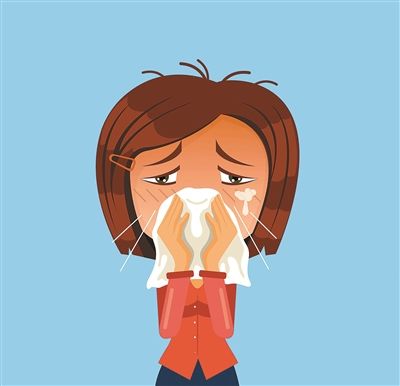
“Mosquito packs” appear in many parts of the body, itching is unbearable. Could it be that the overwintering mosquitoes have started to “do things”? In fact, this situation is likely to be hives. Well, how did you get a bag? Today, the doctor will take you to understand this “sound itchy” disease.
Take you to the “big family” of urticaria
Urticaria is a very common skin condition that can occur at any age. About 30% of people experience hives at least once in their lifetime and can occur at any age and gender. According to the duration of the disease, urticaria can be divided into acute urticaria and chronic urticaria, chronic urticaria symptoms last more than 6 weeks.
According to the etiology, urticaria can also be divided into spontaneous urticaria and induced urticaria, of which induced urticaria includes skin scratching syndrome, cold urticaria, delayed pressure Urticaria, solar urticaria, vibratory angioedema and contact urticaria, etc.
How did these “mosquito packs”
come about?
The etiology of urticaria is very complicated, and it can be divided into exogenous and endogenous according to different sources. Exogenous factors are mostly transient, and endogenous factors are mostly persistent.
Exogenous factors Direct sunlight, friction and pressure on the skin, hot and cold stimulation, eating certain foods or drugs, inhaling allergens, etc.
Endogenous factors Bacterial and viral infections, fatigue, mental stress and chronic diseases, etc.
In addition to the factors listed above, there are other causes of urticaria. It is usually easier to find the cause of acute urticaria, while the cause of chronic urticaria is often difficult to identify. According to current research, chronic urticaria symptoms in adults or children are rarely caused by allergies, but are spontaneous.
Mast cells in the human body are the most important effector cells that cause urticaria. They are widely distributed around the microvessels under the skin and visceral mucosa, and have a strong immune regulation function. Despite its name, mast cells have nothing to do with obesity. Mast cells in patients with urticaria can be activated through different mechanisms to release substances such as histamine, tryptase, interleukin, and leukotrienes, resulting in wheals, edema, and itching.
One of the important mechanisms is an immunoglobulin IgE in the human body, which plays a central role in the pathogenesis of urticaria. IgE can activate mast cells in different ways, thereby releasing the above-mentioned inflammation such as histamine. mediator, causing symptoms of urticaria.
If these symptoms appear, seek medical attention as soon as possible
Urticaria is mainly characterized by wheals of varying sizes with itching. The wheals are variable in shape and size, have a central bulge, and are often accompanied by a peripheral flush that usually resolves spontaneously within 24 hours, but often alternates on other areas of the body. Most patients with chronic urticaria last for several years, or even up to 50 years.
However, urticaria cannot be equated with wheals, and some patients with urticaria also develop angioedema, which is characterized by a sudden onset of swelling of the dermis or subcutaneous tissue with itching, pain, and burning ( such as eyelids and lips). Angioedema lasts longer than wheals, up to 72 hours.
In addition to wheal and angioedema, patients with severe urticaria may also be accompanied by systemic symptoms such as fever, nausea, vomiting, abdominal pain, diarrhea, chest tightness, and airway obstruction, and may also appear if the larynx is involved. Difficulty breathing or even choking. If a person with urticaria develops fever and difficulty breathing, they need to go to the emergency department of the nearest hospital as soon as possible.
Text/Cao Yuan (Peking University Third Hospital)